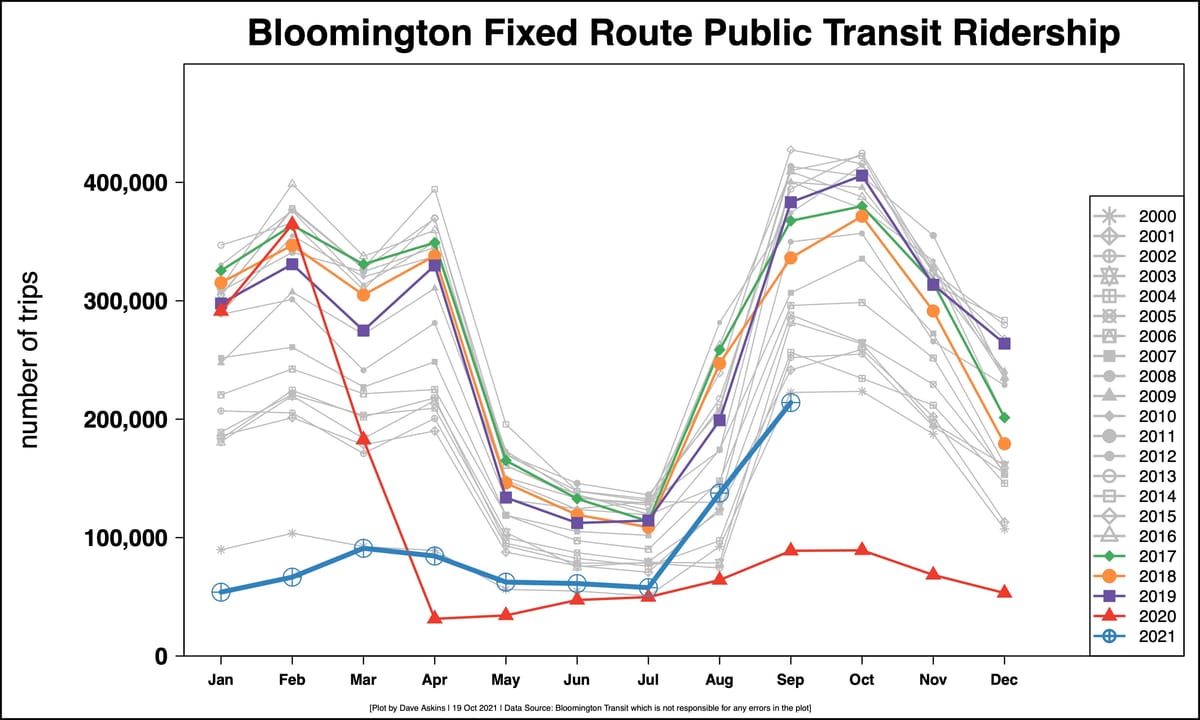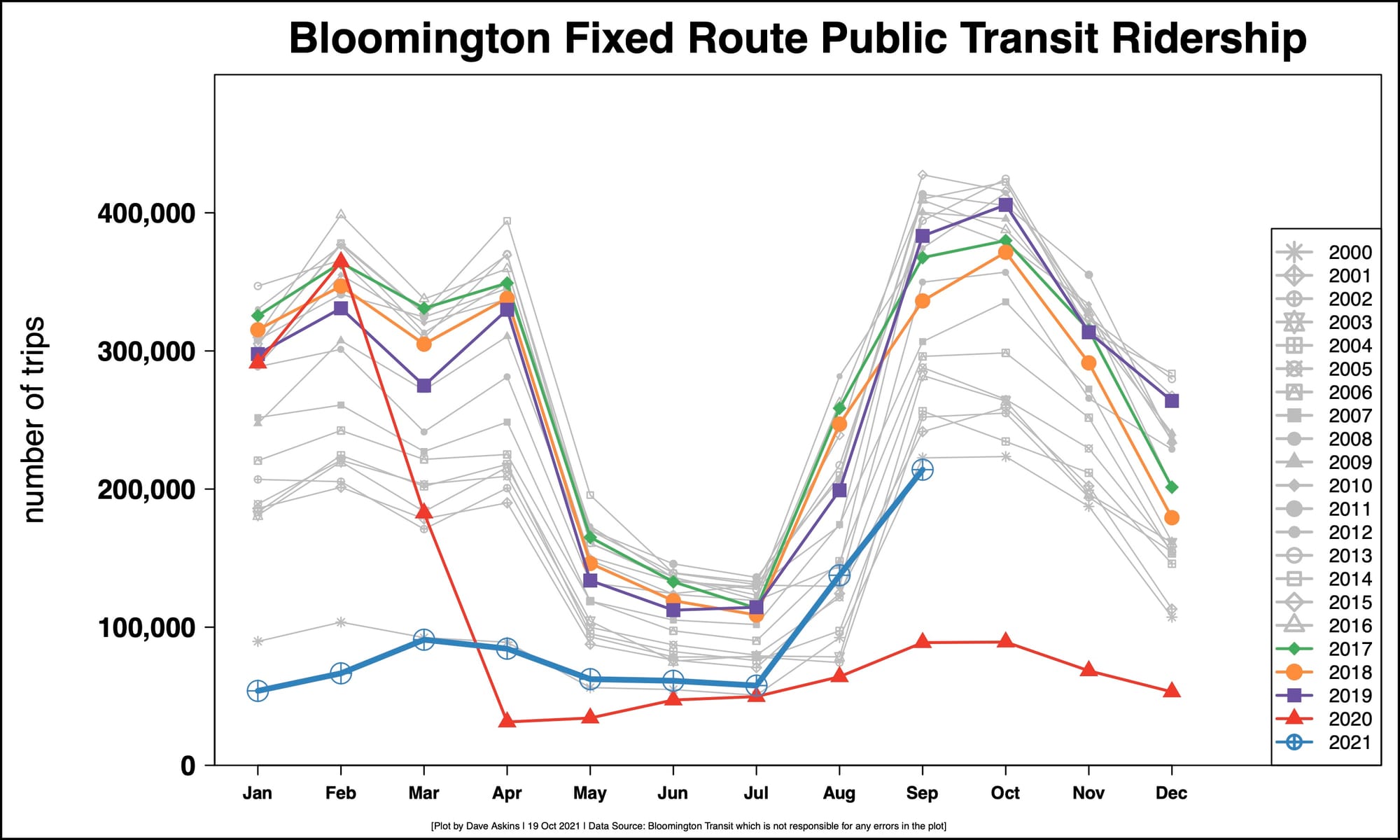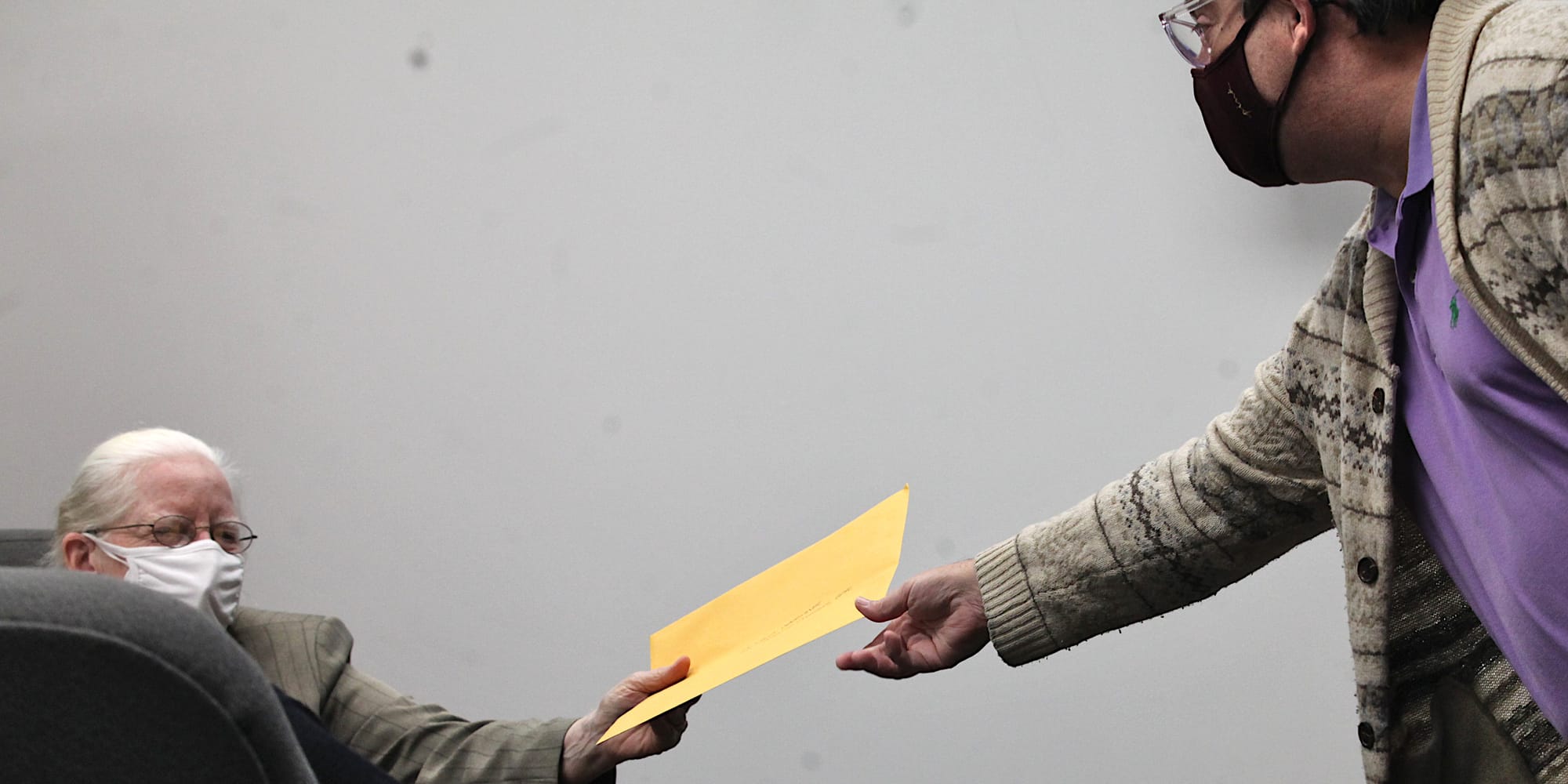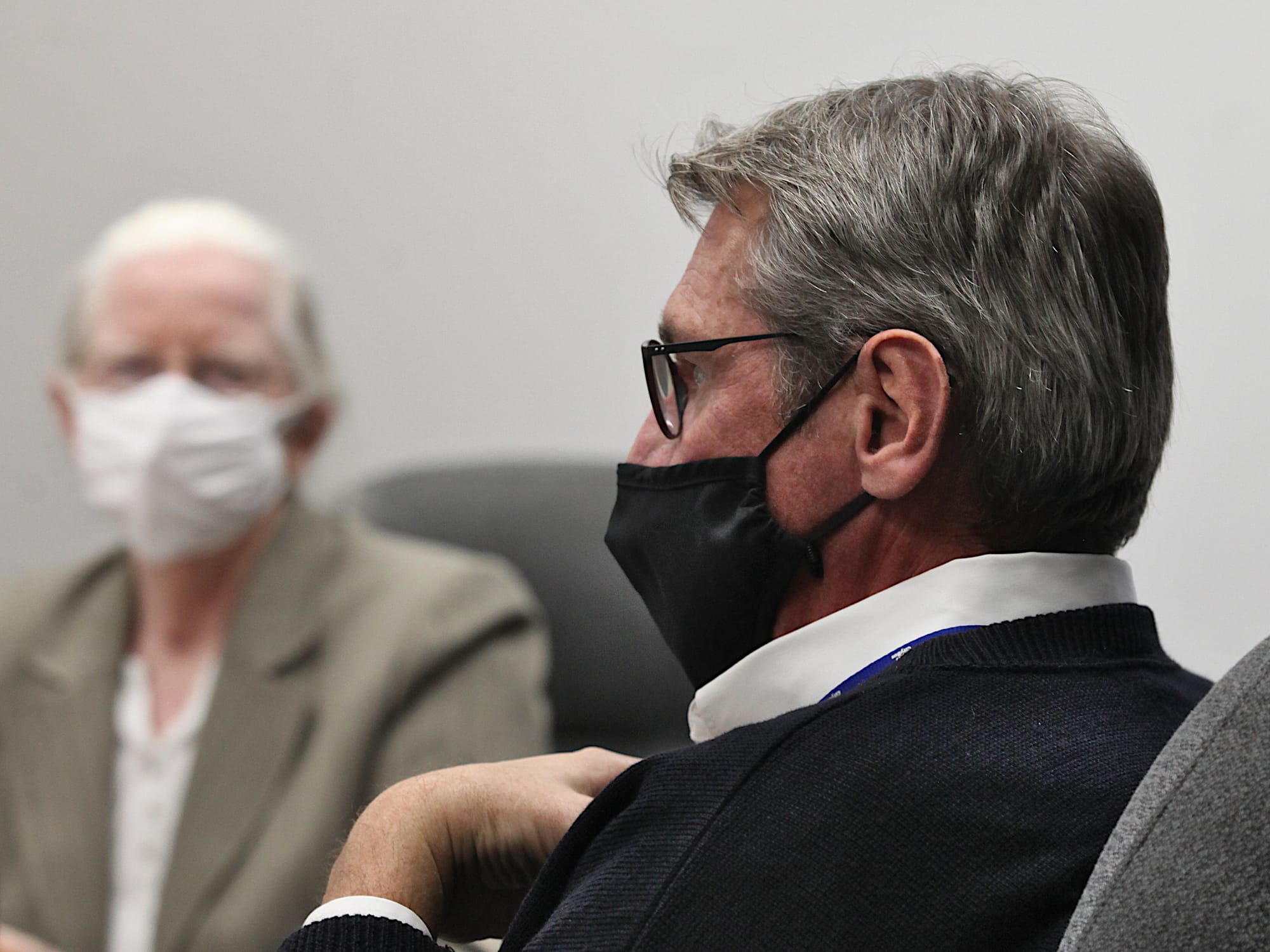Careers, not jobs: Bloomington Transit GM describes new bus driver contract





On Tuesday night, Bloomington Transit’s five-member board approved a new four-year collective bargaining agreement with AFSCME Local 613, the bus drivers union.
Under the new contract, for full-time fixed-route bus drivers in their third year of service, the hourly wage will increase from $19.69 now to $21.19 in January 2022. That’s a 7.6-percent increase.
By the fourth year of the contract, those drivers will be paid $25.69 an hour, which is a 30.5-percent increase over their current wage.
New BT general manager John Connell, who took over from retiring Lew May at the start of the month, told the board, “One of the goals that we set out was to establish an increase in pay and benefits where we could be in a position to offer careers, not jobs. And I think this contract does that.”
Connell continued, “It’s a four-year term. And in the fourth year, our wages will be very competitive.”
He added, “We’re hoping to see some improvements in our recruiting efforts.” Due to a driver shortage, BT is currently making just about 70 percent of the runs that it would normally make this time of year, Connell said at Tuesday’s board meeting.
Connell said, “I think one of our best recruitment tools is when you have existing employees talking positively about their job.” Connell continued, “They feel valued, respected, and I look for them to be some of our biggest cheerleaders moving forward.”
Echoing Connell’s sentiments about recruitment of new drivers, was president of AFSCME Local 613, Jeff Cisneros. He appeared in person at the hybrid video-conference format meeting, to hand off a copy of the union’s ratified letter of agreement to board chair Nancy Obermeyer.
About recruitment, Cisneros said he had direct knowledge of drivers, who were not recruiting before, who are now actively talking to their friends and acquaintances. Drivers recognize that it’s a benefit not just to BT, but to them as well, Cisneros said.
On Tuesday, the board discussed for more than a half hour the mechanics of Connell’s quarterly performance review and how to measure his performance against BT’s priorities. In the context of that discussion, Connell identified his top priority: Hiring enough drivers to be able to make all the scheduled runs.
Connell said, “First and foremost, I’ll tell you, the number one priority is for us to get back in full staff and operate every route and every schedule that we have published.”
The 70-percent of scheduled runs is reflected in recent ridership statistics.
This year, the monthly ridership numbers for September showed the kind of seasonal jump from August that’s normally associated with the start of Indiana University’s fall semester: 214,000 rides in September compared to 138,000 in August. That means they’re also sharply up from the 88,000 rides given in September 2020, when the university delivered its instruction remotely, due to the pandemic.
But 214,000 rides is still just about 55 percent of the number given by BT in September 2019, in pre-pandemic times.
About the new collective bargaining agreement, board member James McLary wanted to know what the budget impact might be.
Connell said, the new contract calls for bigger wage increases than were planned for in the recently adopted 2022 budget. He said that some overtime cost savings could be realized as additional drivers are hired—because of better recruitment made possible by the contract.
Connell also said if it turns out there’s not enough money in the budget, there’s money in BT’s fund balances that can be tapped through an additional appropriation. “If we have to do an additional appropriation in the middle of the year, the money’s there to do that,” Connell said.
As a part of her personnel report, HR director Brenda Underwood said in September three fixed-route drivers were hired, but one of those didn’t make it through training. One service attendant was hired, but one service attendant left, she reported. But so far in October, four new drivers, a service attendant, and a mechanic have been hired, she said.
One measure of Connell’s optimism about future hiring came in the form of his thinking about planning for space to deliver instruction and training: “If we do have tremendous success with recruitment, and we have class sizes of four or more, we have to be prepared to facilitate training, which we haven’t really had to do in the past.”
Table: Fixed Route Driver Compensation in new AFSCME Local 613 CBA
| Full Time Fixed Route | Now | Jan 2022 | Jan 2023 | Jan 2024 | Jan 2025 | First Year | After 4 Years |
| First 12 months | $18.65 | $19.02 | $19.40 | $19.79 | $20.19 | 2.0% | 8.2% |
| Second 12 months | $19.32 | $19.71 | $20.10 | $20.50 | $20.91 | 2.0% | 8.2% |
| Third 12 months | $19.69 | $21.19 | $22.69 | $24.19 | $25.69 | 7.6% | 30.5% |
| After 36 months | $22.00 | $23.50 | $25.00 | $26.50 | $28.00 | 6.8% | 27.3% |
| After 4 years | $22.14 | $23.64 | $25.14 | $26.64 | $28.53 | 6.8% | 28.9% |




Comments ()